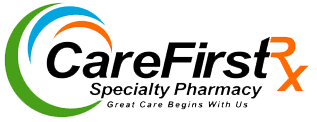Online Pharmacies - A Brief History
With access to information at our fingertips, there is also easy access to prescription medication. With one click—plus free shipping—acquiring prescription medications has become easier than getting them at traditional brick-and-mortar pharmacies. And in some cases, it’s more affordable.
Getting to that place has been a process that’s moved at the same rapid pace as the growth of the internet. It hasn’t been easy, nor should it be when it comes to providing health care. The mission of the online pharmacy to provide access to affordable medication is also accompanied by guaranteeing safety and security to the consumer.
Beginnings
The early years of internet pharmacies resemble that of the mail-order patent medicines from the late 19th century with its trade in questionable cures. While scientific advances and improved manufacturing processes allowed for better medicines to be made available to the public, shady cures and practices persisted. Stronger regulation over mail-order commerce hindered much of what could be sent by post. In 1904, the National Association of Boards of Pharmacy (NABP) was founded to combat dangerous manufacturers of disreputable medicines and monitor the practices of pharmacists.
By the 1990s the digital marketplace had begun to emerge as a destination for consumers. Just as Amazon.com was expanding outward from being the largest bookstore ever to becoming a vast commercial complex, more companies were becoming one-stop, one-click shopping hubs. Pharmacies and larger retail chains were still brick-and-mortar establishments where people would arrive with a doctor’s prescription and get it filled on premises. Increasingly there was a need to expand on to the internet.
In 1999, Drugstore.com was launched. It was not the first online pharmacy, but it was the first that offered a safe, secure service for consumers. In its wake, more pharmacies began to found websites both reputable and disreputable. The NABP set up the Verified Internet Pharmacy Practice Sites (VIPPS) program where reputable online pharmacies could apply to be registered as a safe and trustworthy site. Sites with their “.pharmacy” domain name can be listed on their “safe.pharmacy” website. Drugstore.com and most online pharmacies associated with major chains got their VIPPS approval in 2003.
International Concerns
Despite the widening digital marketplace, the price of most prescription drugs remained high. As they took advantage of looser rules, this put Canadian pharmacies at an advantage. They partnered with other pharmacies in countries such as the United Kingdom, Australia, New Zealand, India, Turkey. This was done to avoid supply restrictions against Canadian pharmacies, as well as to take advantage of lower drug prices and increase their profits.
With increasing numbers of Americans using Canadian (and some fakes claiming to be Canadian) sites, Dr. Tod Cooperman, M.D. and Gabriel Levitt co-founded PharmacyChecker.com in 2002. Their mission was to better educate the population on drug cost comparisons, as well as drug safety. As they put it on their website: “We are a stakeholder in the online consumer-driven healthcare community, seeking an open Internet environment that promotes innovation and new business models, especially those that serve the public health.”
With the international proliferation of prescription drug sites engaging in fraudulent and dangerous practices, Interpol launched “Operation Pangea” in 2008. Pangea targets “the three principal components used by illegal websites to conduct their trade—Internet Service Provider (ISP), payment systems and the delivery service.” Since its kickoff, Pangea has shut down thousands of websites and seized millions of pills and assets of over USD $80 million. It continues to this day.
What’s Next?
Stateside, the effort to bring affordable prescriptions while combating fraudulent and illegal sites continues. In 2010, the Obama Administration through the White House Office of the Intellectual Property Enforcement Coordinator (IPEC) created the Center for Safe and Internet Pharmacies (CSIP), as part of an effort to deal with intellectual property infringement. Working with LegitScript (a company contracted by the FDA to investigate and verify online pharmacies) and the Alliance for Safe Online Pharmacies, CSIP continues to work to identify and shut down rogue pharmacies and discourage consumers from using them. The push also includes recruiting search engines such as Google, domain registrars and credit card companies to help in the fight.
In 2016, Walgreens shuttered Drugstore.com—after buying it for nearly $430 million for it in 2011. The future of most major online pharmacies seems to be one where they are folded into a larger parent company’s site. The brick-and-mortar establishments won’t be going away any time soon, but the number has diminished.
The struggle to provide affordable prescription drugs will continue for the foreseeable future. With a continuing partnership between national and international agencies and private companies providing diligent oversight, the number of bad actors will diminish, and legitimate competition will help to create a fair marketplace.



Comments